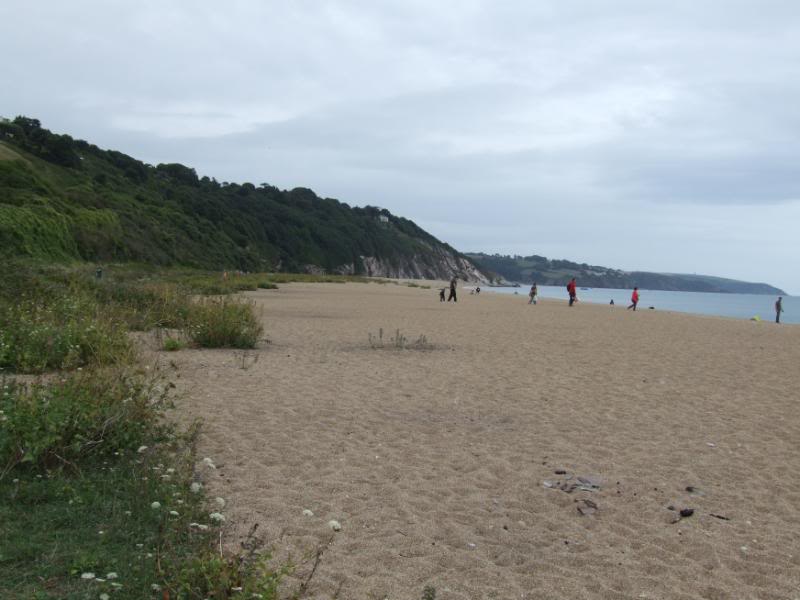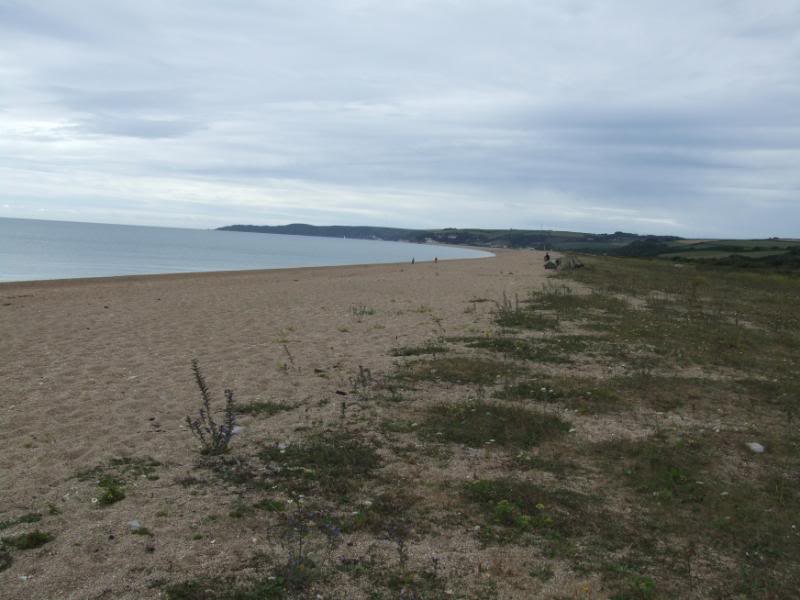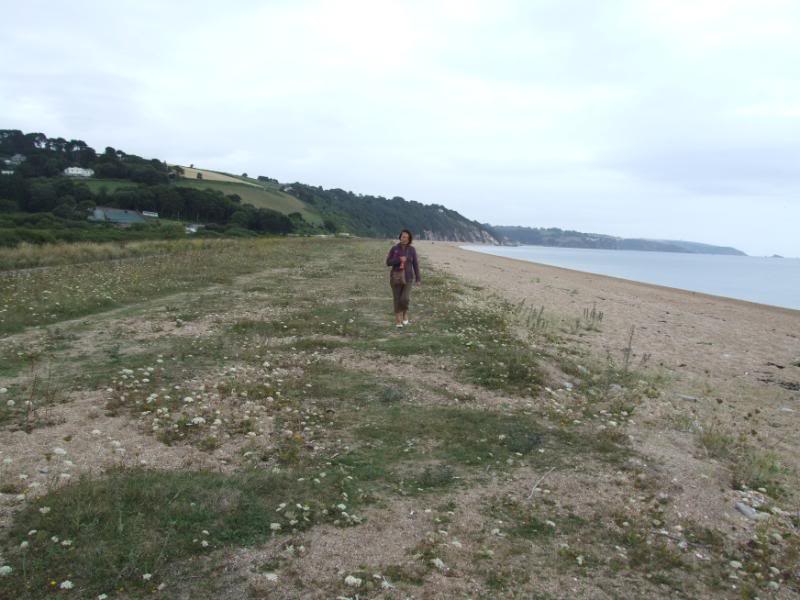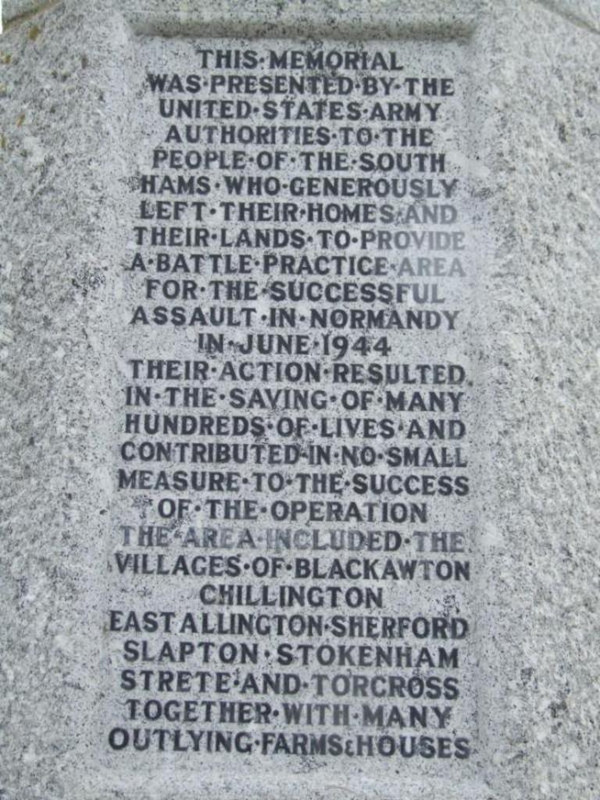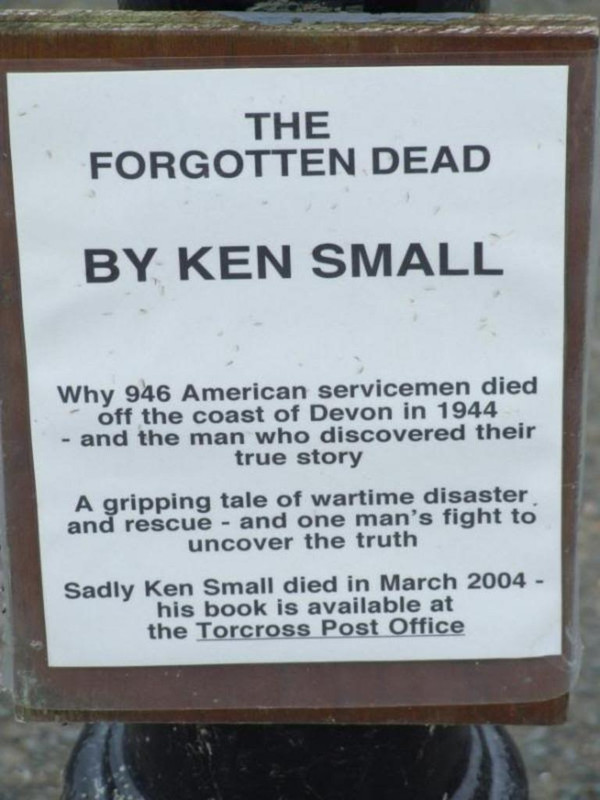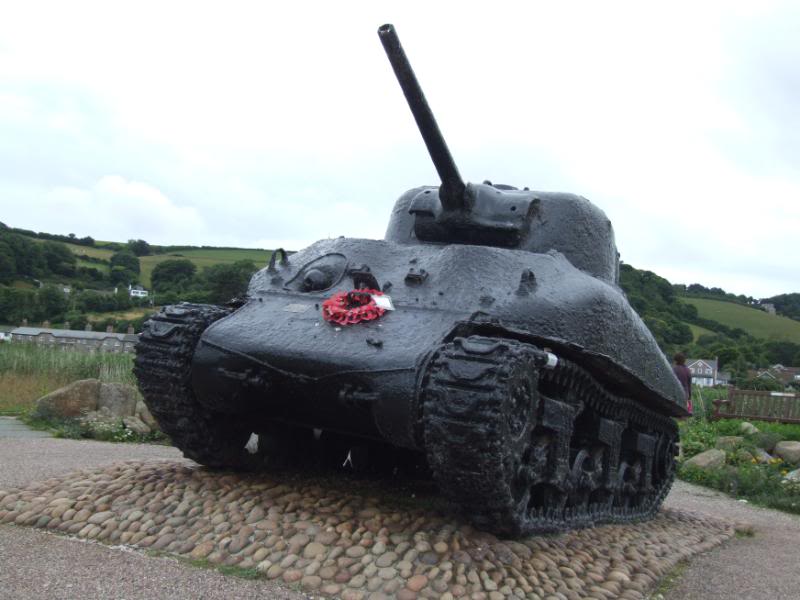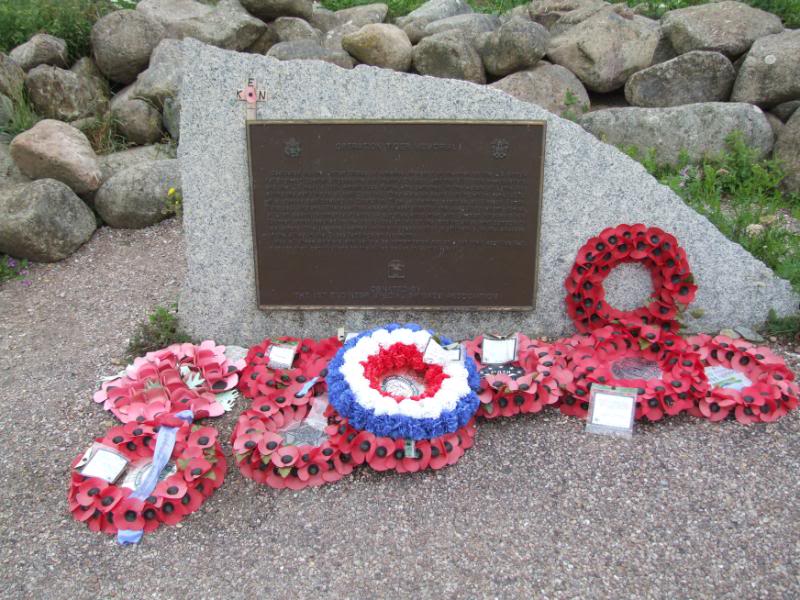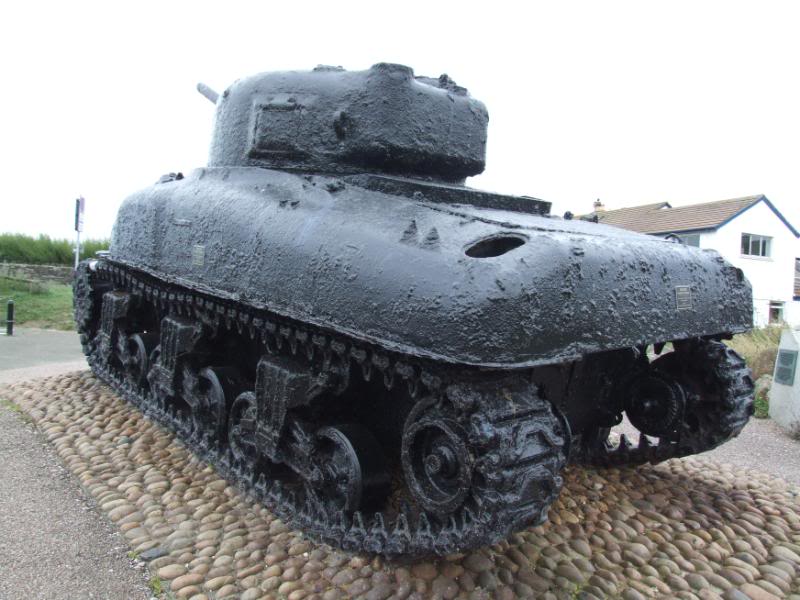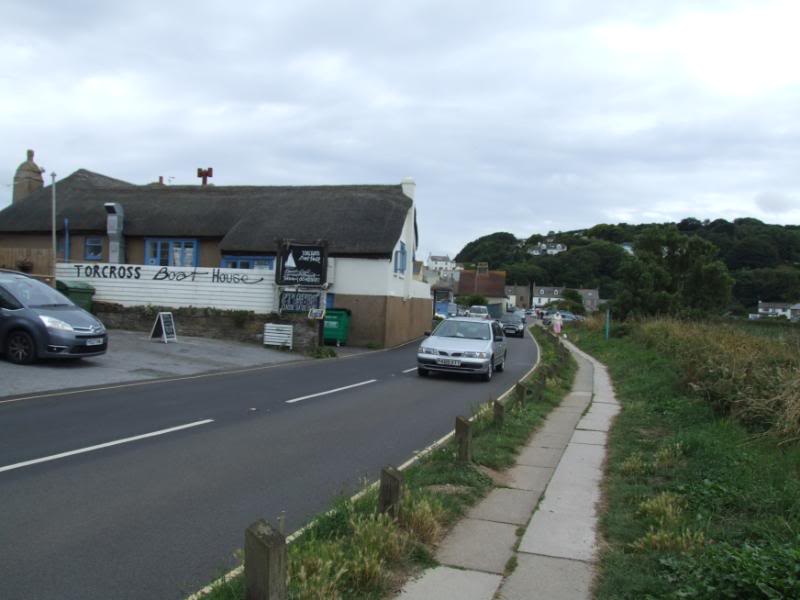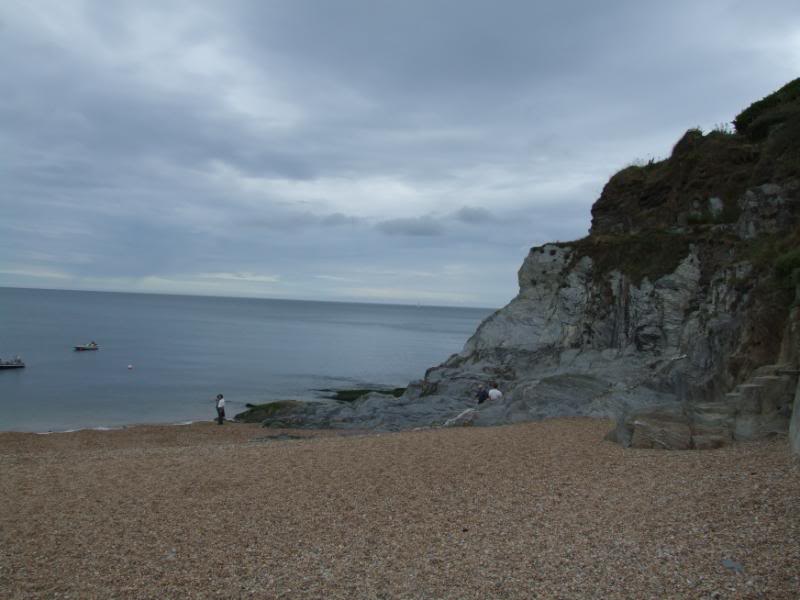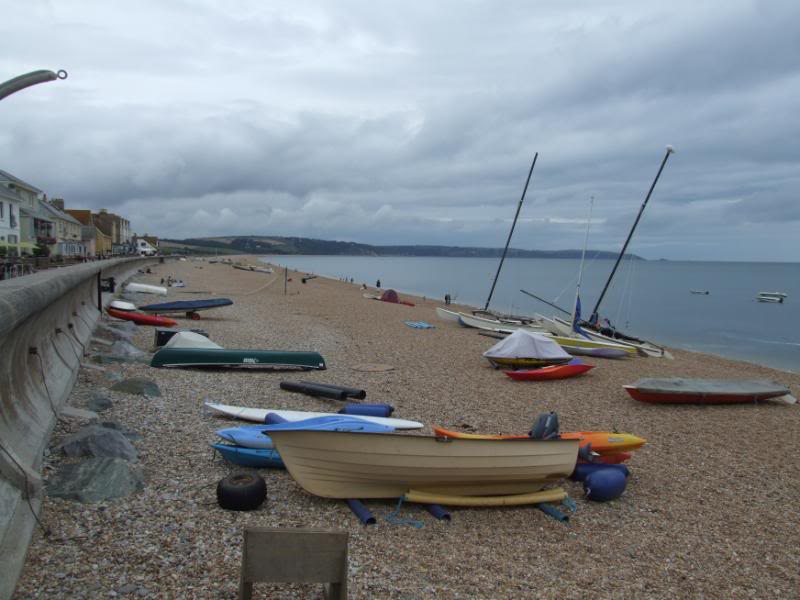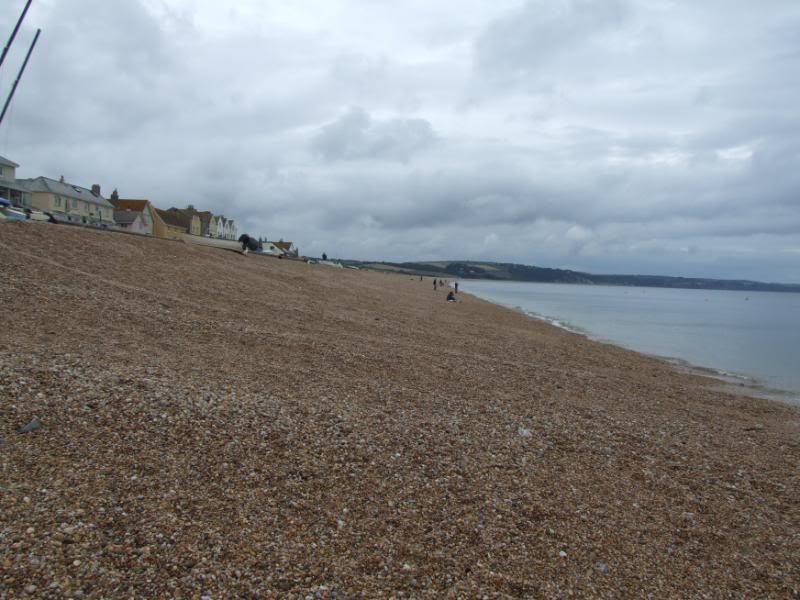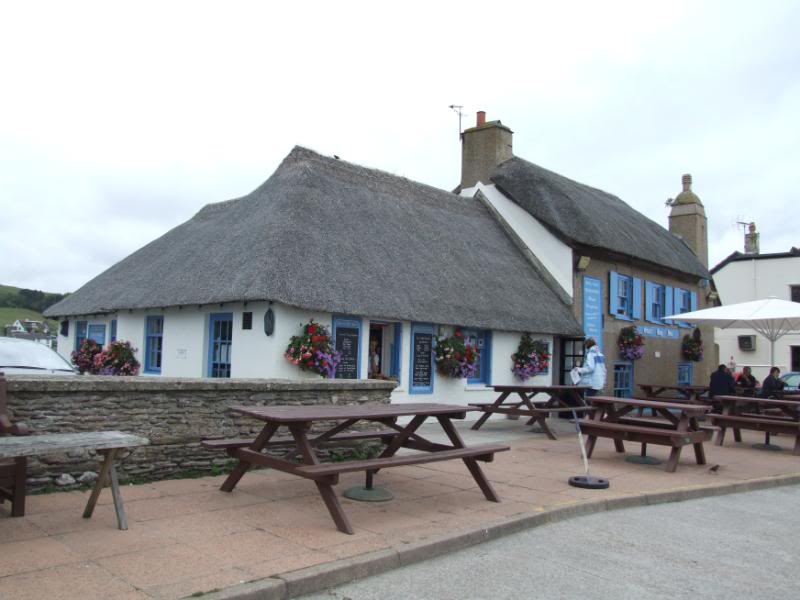Post by Dave on Sept 13, 2010 18:28:01 GMT
Slapton Sands The Cover Up
With rain falling just after lunch we were unsure if to risk going out for the afternoon and early evening, in the end we decided we would go out and one thing we have never done is walk from one end of Slapton sands and back. I never realised it was two and half miles from one end to the other, I do now as my legs are reminding me once gain I took them further than they would have liked.
Mind you if I had not played games with Carol like trying to be the one walking in front I might have been alright, the thing is she walks everywhere and at pace and she was in fits of laughter most of the afternoon due to my attempts of running to catch up and pass her and trying to built up a bit of a lead, until I ran out of puff and she just went passed me again.
We parked the car in Strete Gate car park at the Dartmouth end of Slapton sands and at first we were walking on the beach, at that end its more like fine gravel, the sort of stuff you might buy in a builders merchants and its hard to walk on as your feet sink a good few inches each time you put them down.
So we moved a bit closer to the road and on a sort of pathway on the ridge that had vegetation on it in most places and we found it far easier to walk on. Breaching of this ridge by the sea can occur in winter storms and a section of the A379 road which runs between the Ley and the beach was seriously damaged by stormy seas in January 2001. The A379 had to be closed, until a new section of road was built some 25 metres further inland. The whole area remains under threat and the decision whether to protect the coastline or do nothing, and let nature take its course has yet to be made.
Its very clear to see on the beach side where the part of the road was washed away how the beach has been banked up as high as possible to act as some sort of sea defence and before they rebuilt the new bit of road there was talk it was not going to be done and that would have cut off Torcross , but thankfully it was done in the end and everything looks stable and fine and there is no real evidence that the road is still in any real danger.
I suppose Slapton Sands is best known because it was the place where many were to lose their lives in a world war two training exercise that the Americans covered up for forty years, that was until a man who had moved to the village found out about it . His name was Ken Small and he was a happy sort of man running a guesthouse, fishing, and netting and potting until one fine day, without any reason, he had a nervous breakdown.
He started beachcombing as part of his recovery for his breakdown and spent several years doing this and found old gold coins, diamond rings and even gold bracelets. To his amazement he also found a large amount of militaria like shrapnel and shell cases, live and used bullets of all calibers, military buttons, and pieces of military vehicles and equipment. He thought that something must have gone terribly wrong during the Second World War
Sometime later, he was told by a friend, a local fisherman, of an ‘object’ some three quarters of a mile out to sea embedded in 60 feet of water. He ventured out to sea in his boat with his friend and a few divers to find out more. When the divers surfaced having inspected the ‘object’ they said that there was an American Sherman tank intact on the seabed.
Ken Small then set about finding out what had happened and was to learn that 749 American soldiers and sailors had died while on a training exercise and there was nothing anywhere to mark the event. He also wanted to recover the tank and it cost him thousands of pounds in the end to do so, but he had many problems along the way getting the permission to recover the tank.
The tank now stands in the car park at Starcross and there is a plaque beside it to mark the tragic event that happened it reads.
Dedicated by the United States of America in honor of the 749 men of the 4th Infantry Division, the 279th Combat Engineers, and the 70th Tank Battalion, United States Army, who, along with crew members of the eight landing ships, U.S. Navy, perished off the coast of Slapton Sands, Torcross, while participating in Operation Tiger, April 26-28 1944. A training exercise in amphibious landings, Operation Tiger was a prelude to the invasion of Europe on June 6, 1944. This joint rehearsal by British and American forces resulted in a military tragedy in which the support convoy was attacked during the early morning hours by German schnellboots. The surprise attack resulted in the loss of several fully loaded and manned landing craft. May these men rest in the knowledge that the lessons of this tragedy added significantly to the ability of the Allies to carry out the successful invasion of Normandy on June 6, 1944. May these soldiers and sailors be remembered for their supreme sacrifice for the Allied cause in World War II.
Slapton sands had been choosen by the Amercians to pratice their beach landings as it closely resenbled Utah Beach, France. Where the D- Day landings were going to take place.
The whole area was evacuated and over 3000 local people had to give up their homes and land and move away, because the commanders had ordered the use of live naval and artillery ammunition to make the exercise as real as possible to accustom the soldiers to what they were soon going to experience.
The Americans did return to Slapton Beach ten years after D=Day and erected a large monument stone in the car park that is half way along the beach to thank the local people for giving up their homes and land, but they never put up anything to remember all those who had lost their lives.
The stone is very close to one of the casualties of the war the Royal sands Hotel, a grand and well known old edifice. The damage began with a stray sheepdog which set off mines close to the hotel. Intensive live artillery exercises on the beach there finished it off.
Ken Small wrote a book called the Forgotten Dead and up until his death in March 2004, he would park his car next to his beloved tank and sell his books there and autograph them as well.
The tank looks like it would never be able to move again, but when it was taken out of the sea after lying in 60 feet of water for 40 years, when the tracks of the tank hit the beach, they moved as freely as they would have done before it ended up in the sea.
It does not say so anywhere near or around the tank, but this tank was not lost on the night all those men lost their lives, in fact it had fallen off a ship over a year earlier. Still that does not matter as thanks to the efforts of ken Small there is now a proper and fitting place of remembrance for all those brave men who died because there was a problem that night with communications and those boats in the exercise ended up using the wrong radio frequencies and never heard the warnings that nine German E-boats were close by.

